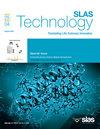基于纳米光子传感的静脉输液机器人药瓶质量识别及抓取打开研究。
IF 2.5
4区 医学
Q3 BIOCHEMICAL RESEARCH METHODS
引用次数: 0
摘要
随着医疗技术的不断进步,传统的药瓶识别和管理方法存在效率低、误差大等问题,急需创新的解决方案。由于其高灵敏度和快速响应的特点,本研究旨在开发一种基于纳米光子传感的静脉输液机器人系统,实现动态环境下药瓶的准确识别、抓取和打开,从而提高静脉输液的安全性和效率。本文设计了一种具有纳米光子传感器的智能机器人系统,利用纳米材料制作高灵敏度传感器,实现药瓶标签的信息识别。通过视觉识别系统和反馈控制算法,设置机械臂自动抓取和打开药瓶。我们在模拟环境中进行了几轮实验,评估了系统的识别率、抓取成功率和打开速度。实验结果表明,基于纳米光子传感器的瓶子识别系统的准确率和抓取成功率较高,打开时间大大缩短,与传统方法相比,新系统在识别和操作上都显示出明显的优势。该研究证明了纳米光子学传感技术在静脉输液机器人中的潜力。通过对瓶子识别、抓取和打开过程的优化,该系统不仅提高了医疗操作的安全性和效率,而且有望在未来的医疗自动化中发挥作用。未来的工作重点将是进一步完善系统集成和优化算法,以适应更复杂的临床环境。本文章由计算机程序翻译,如有差异,请以英文原文为准。
Study on the quality of drug vial recognition and grasping and opening for pharmacy intravenous admixture robot based on nanophotonic sensing
With the continuous progress of medical technology, traditional medicine bottle identification and management methods have problems such as low efficiency and large errors, and innovative solutions are urgently needed. Due to its high sensitivity and rapid response characteristics, this study aims to develop a robot system for intravenous infusion based on nanophotonics sensing to realize accurate identification, grasping and opening of medicine bottles in a dynamic environment, so as to improve the safety and efficiency of intravenous infusion. In this paper, an intelligent robot system with nanophotonics sensor is designed, which uses nanomaterials to produce high sensitivity sensor, so as to realize the information recognition of medicine bottle labels. The robot arm is set up to grasp and open the medicine bottle automatically through visual recognition system and feedback control algorithm. We conducted several rounds of experiments in a simulated environment to evaluate the recognition rate, grab success rate, and opening speed of the system. The experimental results show that the recognition system based on nano photonic sensor in bottle of accuracy and grab the success rate is higher, open time is greatly shortened, compared with traditional methods, the new system in recognition and operation were showed a significant advantage. The study demonstrates the potential of nanophotonics sensing technology in intravenous infusion robots. By optimizing the process of bottle recognition, grasping and opening, the system not only improves the safety and efficiency of medical operations, but is also expected to play a role in future medical automation. Future work will focus on further perfecting the system integration and optimization algorithm, so as to adapt to more complex clinical environment.
求助全文
通过发布文献求助,成功后即可免费获取论文全文。
去求助
来源期刊

SLAS Technology
Computer Science-Computer Science Applications
CiteScore
6.30
自引率
7.40%
发文量
47
审稿时长
106 days
期刊介绍:
SLAS Technology emphasizes scientific and technical advances that enable and improve life sciences research and development; drug-delivery; diagnostics; biomedical and molecular imaging; and personalized and precision medicine. This includes high-throughput and other laboratory automation technologies; micro/nanotechnologies; analytical, separation and quantitative techniques; synthetic chemistry and biology; informatics (data analysis, statistics, bio, genomic and chemoinformatics); and more.
 求助内容:
求助内容: 应助结果提醒方式:
应助结果提醒方式:


